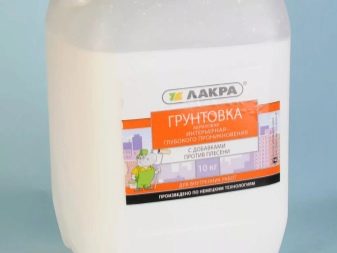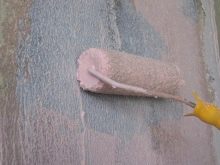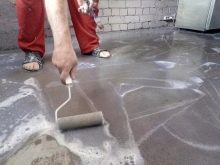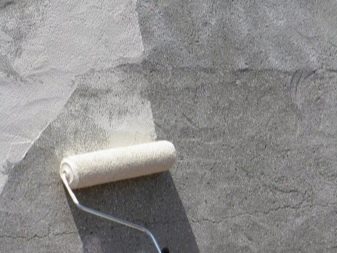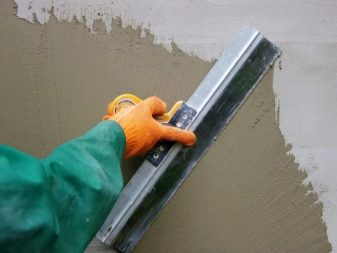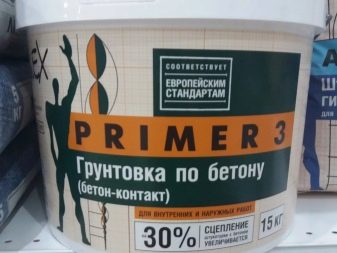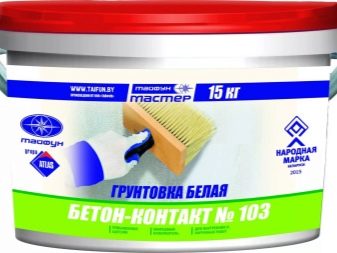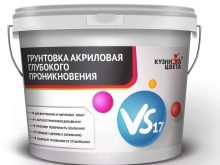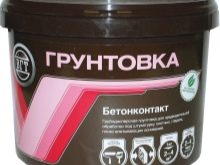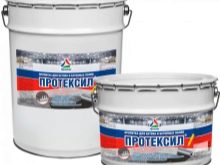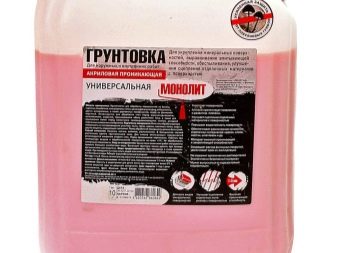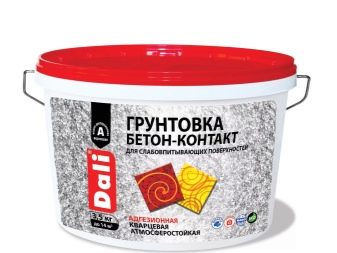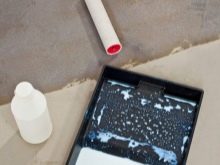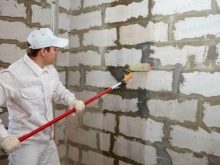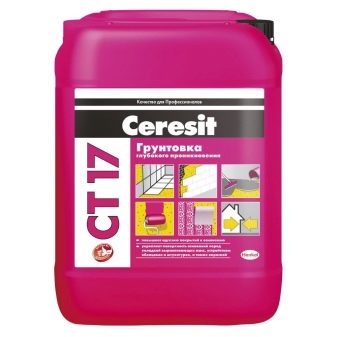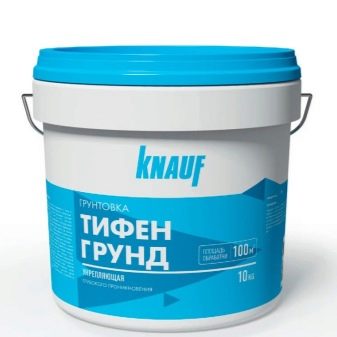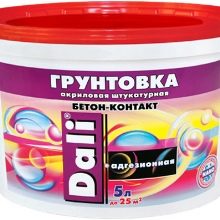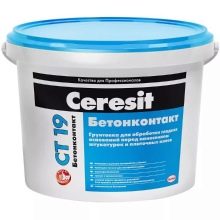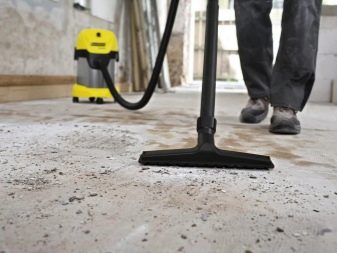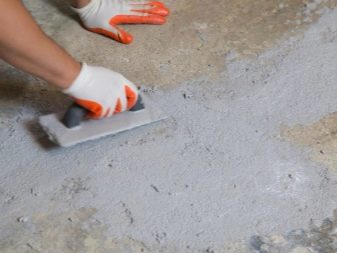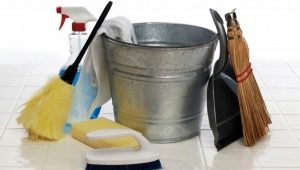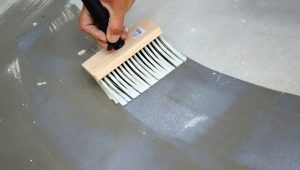Deep penetration primers for concrete: application features
Any finishing work begins with a primer. Each material requires its own coating, thanks to which further work will be successful. For concrete special deep penetration primers are produced, which have features of application.
Features and purpose
Any surfaces, no matter how solid they are, need to be repaired from time to time, since the internal structure is destroyed, and the appearance of it deteriorates. Deep penetration coatings can prevent this and increase the life of the surface.
Deep penetration primer can be used for exterior and interior applications. It improves the technical parameters of surfaces. The primer is necessary for various surfaces: foam concrete, reinforced concrete, aerated concrete and concrete slab.
Through the use of primer increases the strength of the coating, there is a necessary protection against moisture. After its use, plaster and other materials intended for further surface treatment fit well. And besides, any decorative coating will stay better and last longer.
Thanks to the primer you can save on other materials. This is due to the fact that it is well absorbed inside, and the paint falls to the surface. Due to the primer, the putty is also well applied to the surface, becoming more elastic.
Specifications
Deep-penetrating base is a water-soluble composition, which includes latex mixture and acrylic paint. The protective film, which is formed on the surface, repels water, helps to survive the cold, and then thaw. Antifungal additive protects concrete from mold and mildew. But at the same time primer does not clog the pores of the walls, due to this, the air circulates normally.
Primers from different manufacturers have additional qualities and characteristics, but the essence remains the same - this is the foundation that protects and strengthens walls, floors and ceilings.
Kinds
For concrete surfaces are special primers of several types.
- Acrylic. It belongs to the category of those that dry very quickly. The advantages include the fact that it does not have an unpleasant smell. This primer is better to handle concrete floor and walls in the room.
- Polystyrene. This type contains solvents with toxic ingredients, so it is recommended to use it in open space. Enclosed spaces are not suitable. Before applying the polystyrene primer, the surface must be plastered.
- Polyvinyl acetate. Ideal for indoor use. Drying time is thirty minutes. After you can paint the corresponding colors.
Primers can also vary in their effects on the surface.
- Penetrating with glue content. It penetrates deep enough into the base, thereby increasing strength. This is a very good option when you need to restore the old surface, to subsequently give it the proper look. Due to this composition, all small cracks will be filled, which will prevent further destruction.The primer of deep penetration can strengthen the porous surface, but not loose. Latex particles help create a durable film.
- Adhesive. This option is different in that it is capable of forming an impermeable film. This quality is irreplaceable when it is necessary to process an already painted surface in order to renew the walls. Then you can put the cement mortar and apply fresh paint.
But it should always be borne in mind that after using one or another primer, it is necessary to apply compositions similar in the presence of components. Paint or putty must be compatible with the primer.
How to choose?
When you have to choose a suitable composition, you need to consider where the surface will be operated and what properties it has. One of the important factors is the place of work, since the primer can be used for both internal and external. If the room is characterized by high humidity, then the primer must be with appropriate protection. In addition, you need to pay attention to what further finishing work will be done.
It will be useful to get acquainted with some manufacturers and their products, so that it is easier to navigate when choosing a suitable primer. Domestic products are on sale at a low price, and there are primers from import manufacturers, the price of which can be much higher.
Manufacturers
For the fragile surface, which requires deep processing, suitable primer "miners". It will level the surface and perfectly prepare it for the application of subsequent materials. This option is among the cheapest.
Primer "Ceresin CT 17" well impregnates any concrete basis. This happens due to the smallest particles that are able to penetrate even into very narrow pores, while steam and gas exchange is unhindered, which makes the coating durable. This primer is represented by two types. The first option is designed to work in a warmer climate, where there are no low temperatures, and the second is recommended to be used where severe frosts are possible, which implies special treatment for concrete. In addition, there is a light tone in the solution.therefore, the machined plane is clearly visible.
A large range of work can be performed using a polyurethane primer Lacra. With it you can avoid the appearance on the surface of the fungus and mold. Antiseptic additive, which is included in this type of primer, allows you to use it in rooms with high humidity. It is perfect for a bath, pool, bathroom, bathroom, loggia or veranda.
A solution that dries quickly and penetrates deeply, in some cases, is simply indispensable. Primer is very popular Knauf Tiefengrand. If you have to putty, laying tile, painting, gluing wallpaper, then this tool fits perfectly.
"Knauf Betocontact" - it is a polymer dispersion primer containing mostly quartz sand. It is ideal for working in rooms. Using it, it is good to work on walls and ceilings, and even in those cases where complex works are planned later. For example, applying decorative plaster or plaster moldings. Immediately it is worth noting that this is an expensive option for coverage.
If the adhesive characteristics are most important, then it is better to use an acrylic primer. "Concrete Contact". After it is applied, the surface becomes rough, while the plaster and glue mix well on it. Accordingly, all materials, which are then attached to this surface, also keep well. Products such as Beton-Contact Lakra and Cerfecit CT19 have the same properties.
How to apply?
Experts recommend applying a deep penetration primer for concrete as follows:
- the concrete surface must be completely dry and clean;
- if there are cracks and irregularities on the wall, they must be fixed;
- the solution is prepared according to the instructions on the package, most often the dry mixture with water is diluted in proportions of one to one;
- the primer is spread over the surface with a roller or a brush; it is better to treat large areas with an airbrush;
- when using a compound with a pungent odor, it is recommended to protect the airways with a respirator
If external work is performed, then it is necessary to adhere to the temperature from +5 to +30.
Before continuing to decorate the walls, ceiling or floor, You need to wait until the primer is completely dry.
Adhering to these simple rules and knowledge about what types of primers exist and how to apply, you can easily cope with the repair work, in particular with applying a primer on a concrete surface.
To learn how to properly ground concrete floor, see below.

